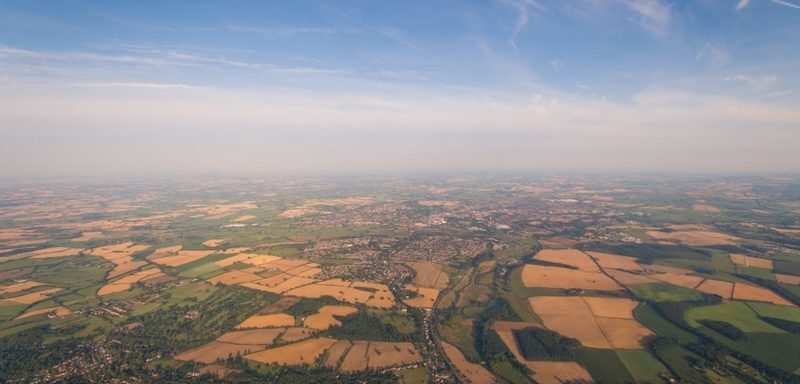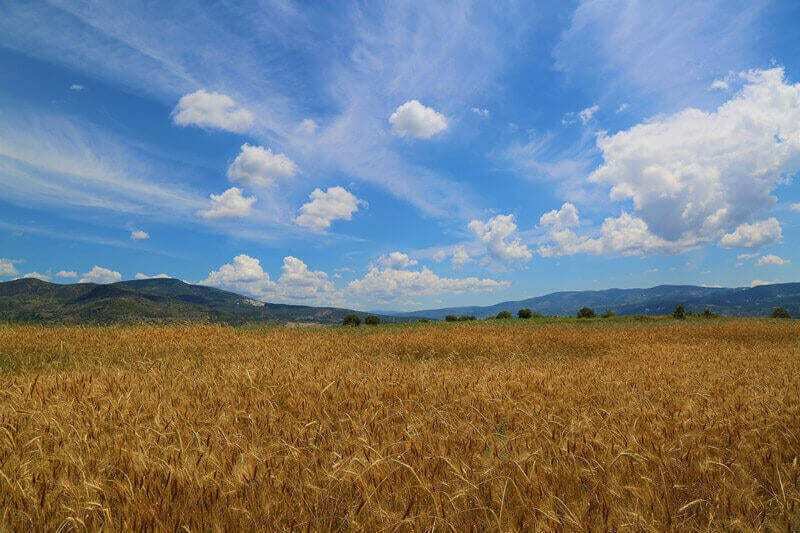

How to Consistently Buy Raw Land at $0.20 to $0.30 on the Dollar

Ever wonder if buying raw land is a good investment? What if I told you there’s a land real estate strategy that allowed you to consistently purchase properties for 20% to 30% of the current market value and you could flip them for 300% profit on average? Well, Mark, who has completed over 5,000 raw land real estate transactions, has been doing just that for over 14 years and completed 192 of these transactions in 2016!
In our recent conversation, he walked us through a step-by-step process for buying raw land and at $0.20 to $0.30 on the dollar.

Raw Land Real Estate Strategy #1 – Low Hanging Fruit
Mark’s go-to strategy is to go after low hanging fruit which, in the raw land game, are parcels whose owners owe back taxes (if you anxiously ask, is raw land a good investment, then pay close attention here). “Let’s imagine I see on the tax roll Joe Fairless owes $200 in back taxes on a piece of raw land in Texas,” Mark said. “So I send you a ‘top dollar’ offer, 20 to 30 cents on the dollar.”
Mark obtains the tax roll from the county treasurer’s office. Once he obtains the tax roll, he scrubs the list, first by filtering it by the use code VL (vacant land). Then, he batches it by sorting by acre, because “you don’t want to send an owner that has 40 acres the same offer that has 5 acres in that same county.” For example, if Mark is wanting to make two offers, one on 1.5-acres of land and another on 40-acres of land, he’ll want to find two separate recent comps. “The 1.5-acre is going to get more money per acre than a 5-acre, 10-acre, or 40-acre would,” Mark explained. “It’s always better to go to a recent comp on a 1.5-acre and divide by four,” as opposed to finding a 40-acre recent comp, dividing by 40 to get a per acre price, and multiplying by 1.5 to get a 1.5-acre value.
Next, Mark needs to calculate an offer price, which involves a recent sales comparable. Mark said, “I’ll look at the comparable sales for 6 to 12 to 18 months, get a median value – I might take even the lowest value and I’ll divide by 4. That’s going to give me a huge margin of safety.”
To obtain the sales comps, Mark goes to the county assessor, who records all the recent sales. He’ll use this list to find recent sales similar to the parcel he wants to make an offer on, use the median or lowest value, and then take that and divide it by 4 to get his offer price.
Next, Mark will send the owner an offer via direct mail. Mark’s message is simple and to the point: “I’m interested in buying your property at this amount.” The letter also includes the legal description and acreage of the property, a section that reads, “accept here, sign here, and mail it back.” To end the letter, Mark says, “It might have a little line for a counter offer. Then it will have some legalese saying ‘based on this this and this, it has an out clause’ so we’re always having a way out.”
When sending offers, it’s basically a numbers game, because obviously, a very low percentage of these offers will be accepted. “Three to five percent of people will accept that offer,” explained Mark. “If it’s under 3%, I know I got my numbers a little low. If it’s over 5% – everyone is accepting my offer – I’m probably a little high.”
When sellers return the letter after accepting an offer, Mark says, “they send it to my mailbox and then we have it scanned. I use a service [called] Smart Scan Alert. I don’t even touch mail anymore. It would go to them, they’ll scan it, and for the scan, I’ll have my VA (virtual assistant) team contact them and [say], ‘hey we got your returned, signed agreement to sell your land. Mark and his team are going to take 7 days of due diligence and we’ll let you know within the next 7 days how we’re going to close.’ Typically, what we’ll do is email them a deed for them to sign, notarize, and send back to us. We’ll record it and then we’ll send them a check. That’s [our process for land that’s] $5,000 or less. If it’s more than $5,000, we’ll close through a title company.”
How does Mark and his team perform due diligence? “We want to call planning and zoning for our due diligence,” he explained. The goal is to determine, “what can we do there? What can’t we do there? Can we build? What are the roads? What are the easements? Are there any utility easements?” These are some helpful points of consideration in answering, “is raw land a good investment?”
Since the owner owes back taxes and has been receiving notices from the treasurer all this time, in combination with the fact that it’s a piece of land and not a property, so they’re not emotionally attached, it’s likely that they’ll accept such a low offer.
This is Mark’s go-to strategy for how he approaches buying land for $0.20 to $0.30 on the dollar. The next strategy is very similar. The only difference is how Mark obtains the original list of vacant land.

Raw Land Real Estate Strategy #2 – Obtain Entire Property Roll
Mark follows a second strategy if, for one reason or another, he can’t get the tax roll from the country treasurer. When that is the case, Mark says, “the best thing to do is [to] go to the county assessor and get the entire property roll, which is public information. Get that in Excel, [and] then start taking out all the commercial properties, industrial properties, and residential properties, by use-code. You can get all the vacant land in that county. Then start batching it by size (i.e. acreage) and get your valuations correct per acre and send out offers that way, always dividing comps by 4.”
In general, Mark says getting a good list in excel format is a challenge. Besides following the method above, here are a couple other ways to obtain a good list. “My favorite way is just go directly to the county,” Mark explained. Also, “you can pay for these lists. You can go to agentpro247.com and buy a list and scrub the list. [Or] you can go to your local title company and ask them for a list.”
Once you have a list, follow the strategy laid out in “Raw Land Real Estate Strategy #1.”
Raw Land Real Estate Strategy #3 – ‘Deed Grabber’
Mark’s final strategy is called a ‘deed grabber.’ “Let’s say, for example, you’ve been getting these back tax notices for years and all of a sudden you know next month, you’re going to lose your property to tax auction,” Mark described. “You know this is going to happen so a deed grabber situation would be ‘I’m going to send you an offer letter right before that property is going to go to tax deed auction and buy it from you and record that deed and pay the back taxes so I don’t have to go into a competitive situation.”
Mark continued, saying, “you time it by going on your calendar and looking at all the tax sale dates for those counties that you’re interested in and you plan out your mailings based upon when those tax deed sales will occur.” To find that information, go to the county treasurer, either online or by sending them an email.

Conclusion
Mark has three strategies for buying raw land at $0.20 to $0.30 on the dollar (and that can help you answer that nagging question, “is raw land a good investment”).
First, he targets the low hanging fruit, which are pieces of land real estate where the owner owes back taxes. Mark obtains the tax roll from the county treasurer or purchases a list online. Then, he goes to the county assessor to find recent comps, which allows him to determine the land’s value. Finally, he divides the value by 4 to get to his offer price and mails the owner a one-page offer letter.
Mark’s second strategy is when the treasurer doesn’t have or won’t give him access to the tax list. When that’s the case, he goes to the county assessor to obtain the entire property roll. At this point, he will follow the same process as strategy #1.
The third strategy is called a deed grabber. For this strategy, Mark sends an offer to an owner right before their land real estate is scheduled to be sold at a tax deed auction.
Do you want more information on buying and selling raw land? Perhaps you have a business strategy you would like an expert opinion on? Apply for a planning session with me, and we might be able to work together on your own strategy that implements Mark’s.




Comments